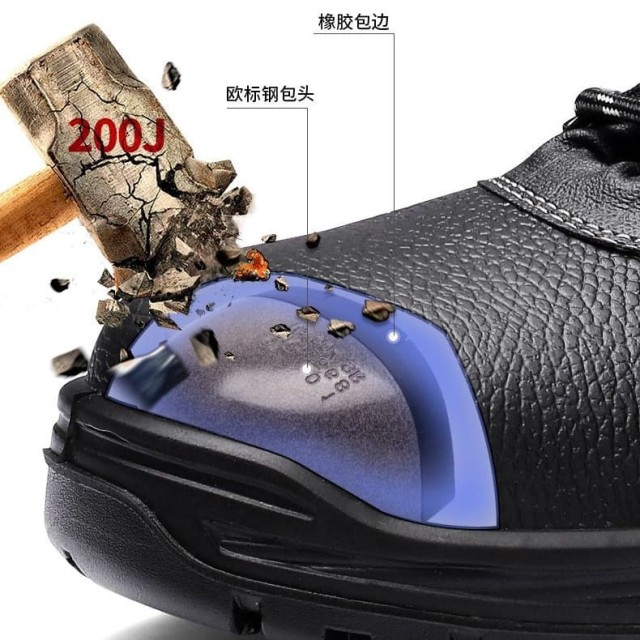When selecting safety-toe footwear, the choice between steel and composite materials directly impacts protection, comfort, and compliance. This guide breaks down their functional differences to help you match the right toe type to your work environment.
Safety-Toe Boot Essentials
Material Science Behind Protection
Steel toes use reinforced steel caps to provide the highest level of impact and compression resistance, meeting ASTM F2413 standards. Composite toes, made from materials like carbon fiber, plastic, or Kevlar, offer lighter, non-metallic alternatives that still meet safety certifications but with trade-offs in bulkiness.
Key distinctions:
- Steel: Superior crush resistance but conducts temperature and electricity.
- Composite: Non-conductive and temperature-neutral, ideal for electrical work or extreme climates.
Workplace Scenarios Dictating Selection
- Construction/lumber: Steel toes excel against heavy falling objects.
- Airports/electrical work: Composite avoids metal detectors and electrical hazards.
- Outdoor/extreme temps: Composite prevents heat/cold transfer.
Performance Comparison
Weight and Fatigue Factors
Composite toes are significantly lighter—reducing leg fatigue during long shifts. Steel toes add roughly 20–30% more weight per boot, which can strain muscles over time.
Electrical Hazard Considerations
Steel conducts electricity, posing risks near live wires. Composite materials are inherently non-conductive, making them safer for utility workers or electricians.
Temperature Extremes Adaptation
- Cold environments: Steel toes can become uncomfortably cold.
-
Heat exposure: Steel transfers external heat to feet faster.
Composite toes maintain neutral temperatures in both scenarios.
Decision Guidelines
OSHA Standards and Certifications
Both materials meet ASTM F2413 standards for impact and compression, but:
- Steel toes typically exceed minimum requirements.
- Composite toes may require thicker designs to achieve equivalent protection.
Industry-Specific Recommendations
- High-impact zones (e.g., warehouses): Prioritize steel.
- Metal-sensitive sites (e.g., airports): Choose composite.
- Mixed hazards (e.g., oil rigs): Evaluate electrical and weight needs first.
Ready to equip your workforce with the right safety footwear? Partner with 3515 for bulk orders of steel and composite toe boots tailored to your industry’s demands. Our expertise ensures OSHA-compliant protection without compromising comfort.
Note: All data points are approximate and based on industry testing standards.
Products You Might Be Looking For:
View heavy-duty steel toe work boots
Explore customizable steel toe safety footwear
Browse OSHA-compliant steel toe work shoes
Check out 3515 steel toe safety boots
See athletic-style steel toe work shoes
Related Products
- Wholesale Durable Breathable Safety Boots Custom OEM Manufacturer
- Safety Footwear Wholesale Manufacturer for Custom OEM/ODM Production
- Wholesale Safety Footwear Manufacturer for Bulk & Custom OEM Orders
- Athletic Safety Shoes with Dial Closure & Steel Toe for Wholesale & Custom Manufacturing
- Wholesale Anti-Smash & Puncture-Proof Safety Shoes Custom Manufacturing for Brands
Related Articles
- How to Prevent Foot Injuries from Steel Toe Boots Without Sacrificing Safety
- How Safety Work Boots Engineer Protection: Features and Standards for Targeted Hazard Mitigation
- Matching Men’s Work Shoe Safety Technologies to Workplace Hazards
- How to Prevent Foot Discomfort Without Sacrificing Safety in Steel Toe Boots
- How Safety Standards for Steel Toe Boots Protect Workers Beyond Impact Resistance



















